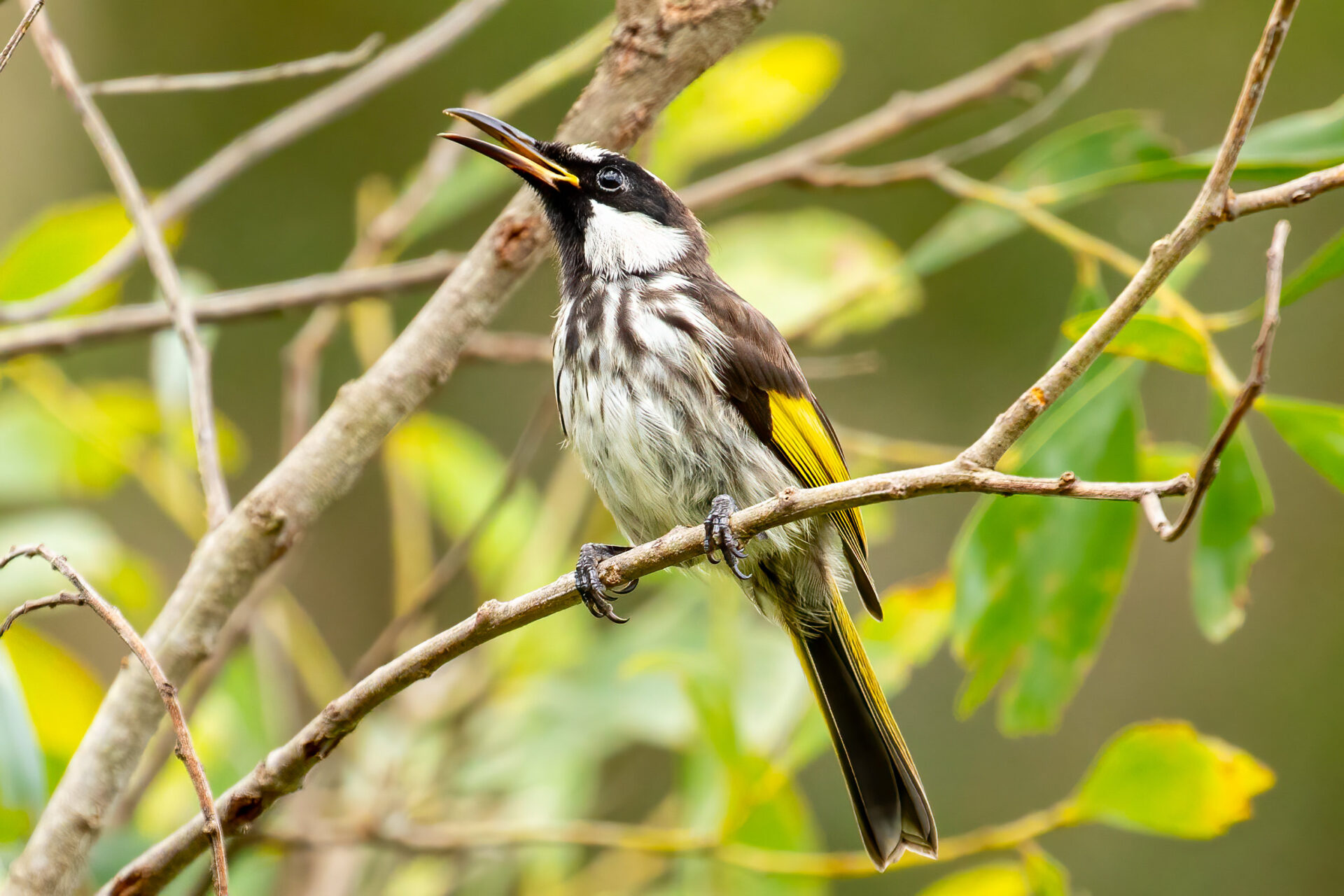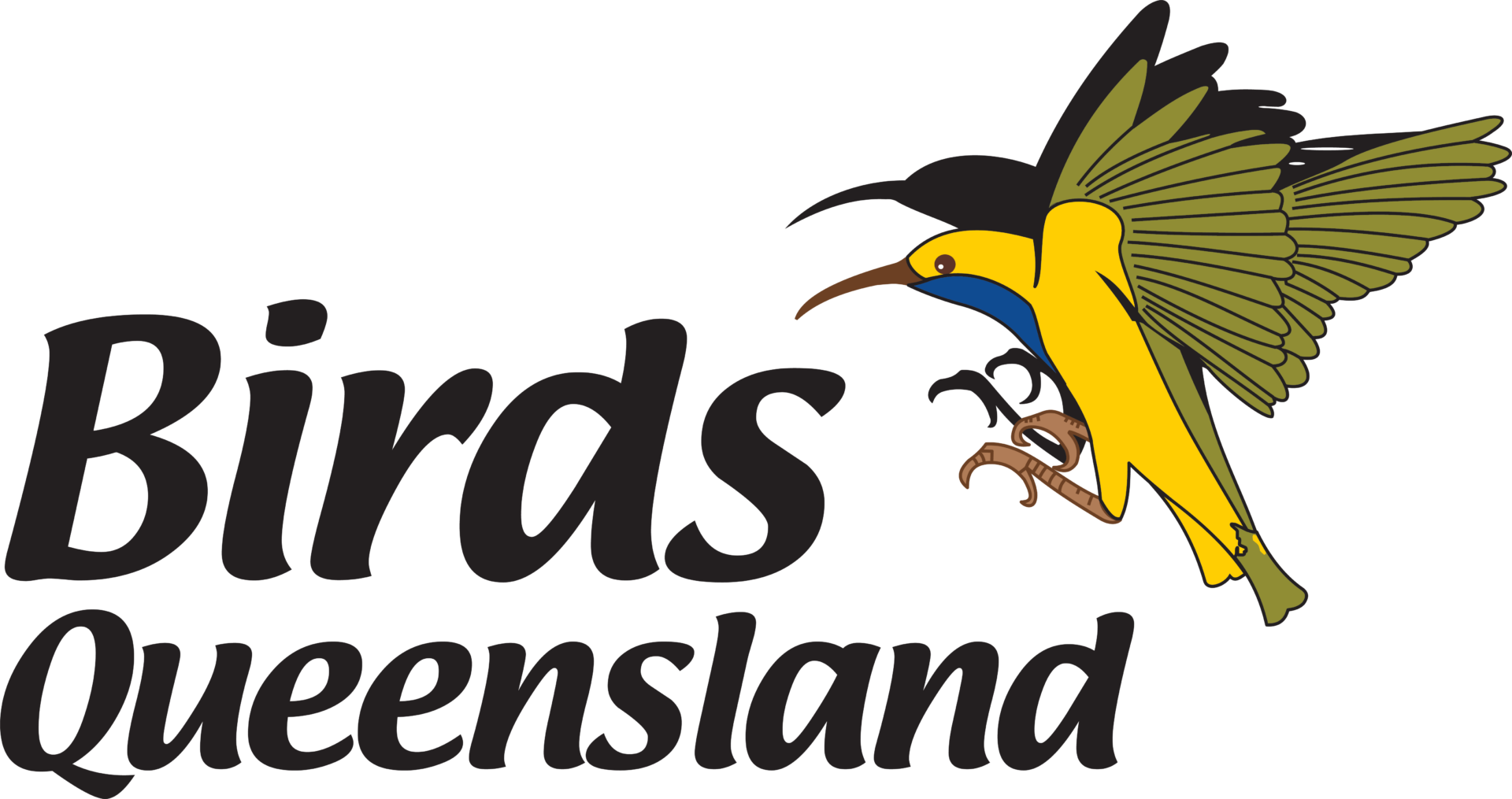This very boldly marked honeyeater has a regular habit of sitting on the top of small to mid-sized bushes and calling loudly so it is very noticeable if you are in heathland areas along the coast as far north as the Tropic of Capricorn. But it comes as quite a surprise to find that it also frequents other but equally specific habitats, even as far north as the Atherton Tableland. These are generally at higher altitudes and in areas of wet sclerophyll forest, usually adjacent to upland rainforest.

The closely related and similar-looking New Holland Honeyeater (Phylidonyris novaehollandiae) has similar preferences – for heathlands and wetter open forest areas at higher altitudes. But it is more a bird of the southern states. It only occurs in heathland north to K’Gari and the wet open forest habitat west as far as the Stanthorpe area and Murgon. The two species of Phylidonyris are confined to Australia, and there are two subspecies of P. niger with one confined to south-west Western Australia.
The White-cheeked Honeyeater has a strong association with Banksias with some studies showing two or three species provide about 60% of its diet. Other sources of nectar include Angophora and Grevillea species, but there is no real preference for Eucalypts. As with all honeyeaters there is a fair amount of insects eaten, and in this case they are often taken in short aerial pursuits. This probably accounts for their habit of perching on higher open sticks or foliage, so that they get a good view of the small flying prey.
Breeding occurs mainly during winter but can extend over other months and the pair stay together for this period. However while the male controls a small territory around the nest it is built solely by the female. Usually just two eggs are laid and the incubation takes about two weeks, with both parents feeding the young for another two weeks. Some studies have shown a fledging success rate of about 60% and subsequently the birds move in family groups around a wider territory.

Banding results show 99% of these honeyeaters stay within 10km of their first capture locality and there is no real migratory or nomadic movements recognized. However the same pair only nests over 1-2 years and the males have a slightly longer life span.
As with most honeyeaters the White-cheeked can be quite aggressive in defending its territory, especially as there is always a large population of non-breeding birds moving around nearby. This species engages in “corroboree” activity where males perch close together and posture while giving a sharp single note. Breeding males have a display flight where they will rise vertically to some height above the nest area and then call loudly before a rapid steep descent.
Within their limited preferred habitat areas these birds are common and don’t appear to be under threat. However development along the southern section of coastal Queensland has seen the loss of much heathland so there may be some cause for concern over the longer term.


